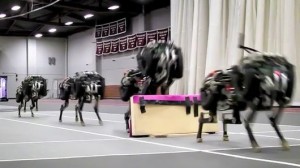How Computers Can Teach Themselves to Recognize Cats
In June 2012, a network of 16,000 computers trained itself to recognize a cat by looking at 10 million images from YouTube videos. Today, the technique is used in everything from Google image searches to Facebook’s newsfeed algorithms.
The feline recognition feat was accomplished using “deep learning,” an approach to machine learning that works by exposing a computer program to a large set of raw data and having it discover more and more abstract concepts. “What it’s about is allowing the computer to learn how to represent information in a more meaningful way, and doing so at several levels of representation,” said Yoshua Bengio, a computer scientist at the University of Montreal in Canada, who co-authored an article on the subject, published today (May 27) in the journal Nature. [Science Fact or Fiction? The Plausibility of 10 Sci-Fi Concepts]
“There are many ways you can represent information, some of which allow a human decision maker to make a decision more easily,” Bengio told Live Science. For example, when light hits a person’s eye, the photons stimulate neurons in the retina to fire, sending signals to the brain’s visual cortex, which perceives them as an image. This image in the brain is abstract, but it’s a more useful representation for making decisions than a collection of photons.
Similarly, deep learning allows a computer (or set of computers) to take a bunch of raw data — in the form of pixels on a screen, for example — and construct higher and higher levels of abstraction. It can then use these abstract concepts to make decisions, such as whether a picture of a furry blob with two eyes and whiskers is a cat.
“Think of a child learning,” Bengio said. “Initially, the child may see the world in a very simple way, but at some point, the child’s brain clicks, and she discovers an abstraction.” The child can use that abstraction to learn other abstractions, he added.
The self-learning approach has led to dramatic advances in speech- and image-recognition software. It is used in many Internet and mobile phone products, and even self-driving cars, Bengio said.
Deep learning is an important part of many forms of “weak” artificial intelligence, nonsentient intelligence focused on a narrow task, but it could become a component of “strong” artificial intelligence — the kind of AI depicted in movies like “Ex Machina” and “Her.”
But Bengio doesn’t subscribe to the same fears about strong AI that billionaire entrepreneur Elon Musk, world-famous physicist Stephen Hawking and others have been sounding alarms about.
“I do subscribe to the idea that, in some undetermined future, AI could be a problem,” Bengio said, “but we’re so far from [strong AI taking over] that it’s not going to be a problem.”
However, he said there are more immediate issues to be concerned about, such as how AI will impact personal privacy and the job market. “They’re less sexy, but these are the questions that should be used for debate,” Bengio said.
References:http://www.livescience.com/





